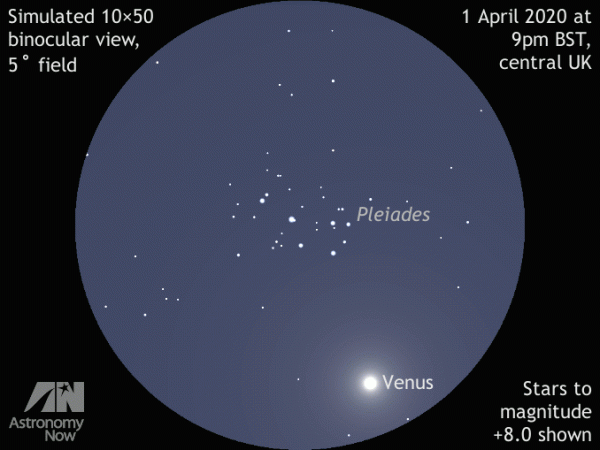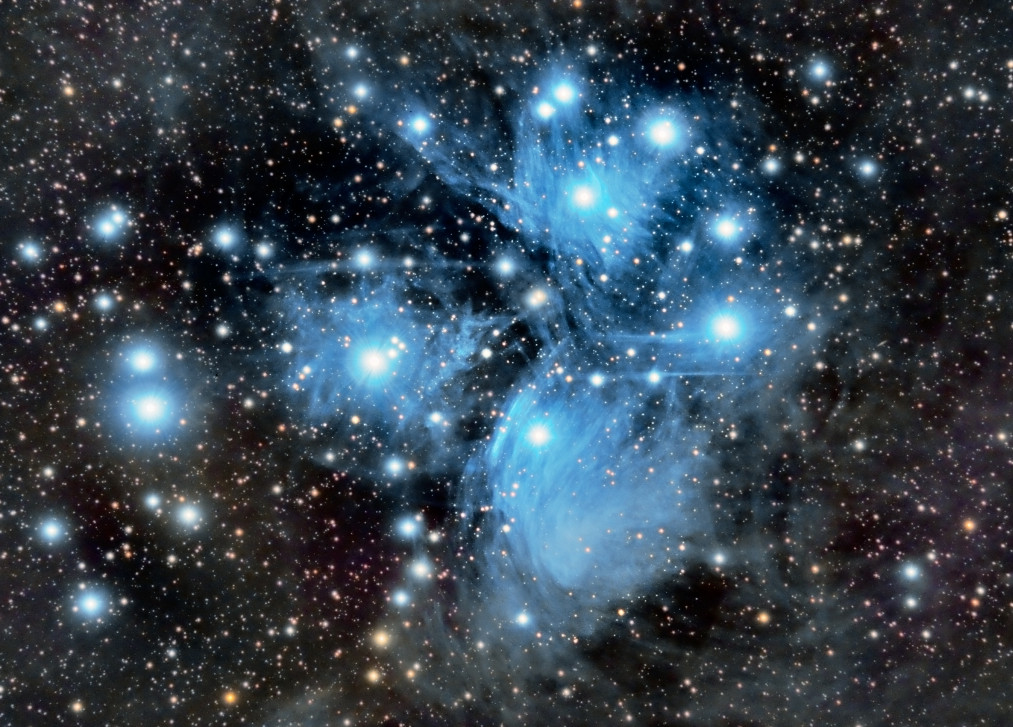Planet Venus photobombs the Pleiades (Seven Sisters) 1–5 April – Astronomy Now Online

Keen observers with a good memory might be feeling a sense of déjà vu at seeing the gap narrow between dazzling planet Venus and the Pleiades open cluster at dusk each night. Almost exactly a year ago, the Red Planet had a similar close encounter with the Seven Sisters. However, unlike tiny, distant (and, therefore, faint) Mars at the end of March 2019, planet Venus is currently dazzling at magnitude -4.5 – almost as bright as it can possibly get.
Bigger and brighter
Although Venus attained its maximum easterly elongation from the Sun on 24 March, it’s still growing in brightness (peaking at -4.7 on 28 April) and apparent size as its orbital motion brings it closer to Earth over the coming weeks. As March 2020 draws to a close, even a small telescope reveals that Venus’ disc is slightly less than half illuminated by the Sun and a modest magnification of just 70× is required to enlarge it to the same size as the Moon appears to the unaided eye.
A photogenic close encounter
For observers in Western Europe and the British Isles, Venus’ closest encounter with the Pleiades occurs at dusk on Thursday, 3 April (see the looping animation above). The brightest member of the Seven Sisters is called Alcyone, known formally as Eta (η) Tauri. The star shines at magnitude +2.87 and Venus passes just 15 arcminutes (one-quarter of a degree, or half a lunar diameter) south of it at 00:48 UT (1:48am BST) on 4 April. The difference in brightness between Venus and Alcyone is staggering: 7.44 magnitudes, or almost 950 times!

Seven Sisters skylore
The Pleiades, or Messier 45, are named after the Seven Sisters of Greek mythology. Generally reckoned to be the most beautiful open cluster in the sky, it’s not surprising that it features in star lore throughout the world. Known as Matariki to the New Zealand Māori, their helical rising in May/June traditionally starts the Māori new year. In Japan, they are known as Subaru, and the eponymous car manufacturer uses a stylised depiction of the star cluster in their logo.
The nine brightest Pleiads (named, in order of decreasing brightness, Alcyone, Atlas, Electra, Maia, Merope, Taygeta, Pleione, Celaeno and Asterope – Atlas and Pleione being their parents) are embedded in whispy blue reflection nebulae that are not easily seen visually. The stars are concentrated in a field of view just over one degree in diameter where typical binoculars will show about one hundred members. Some 100 million years old, the Pleiades are about 440 light-years distant.






